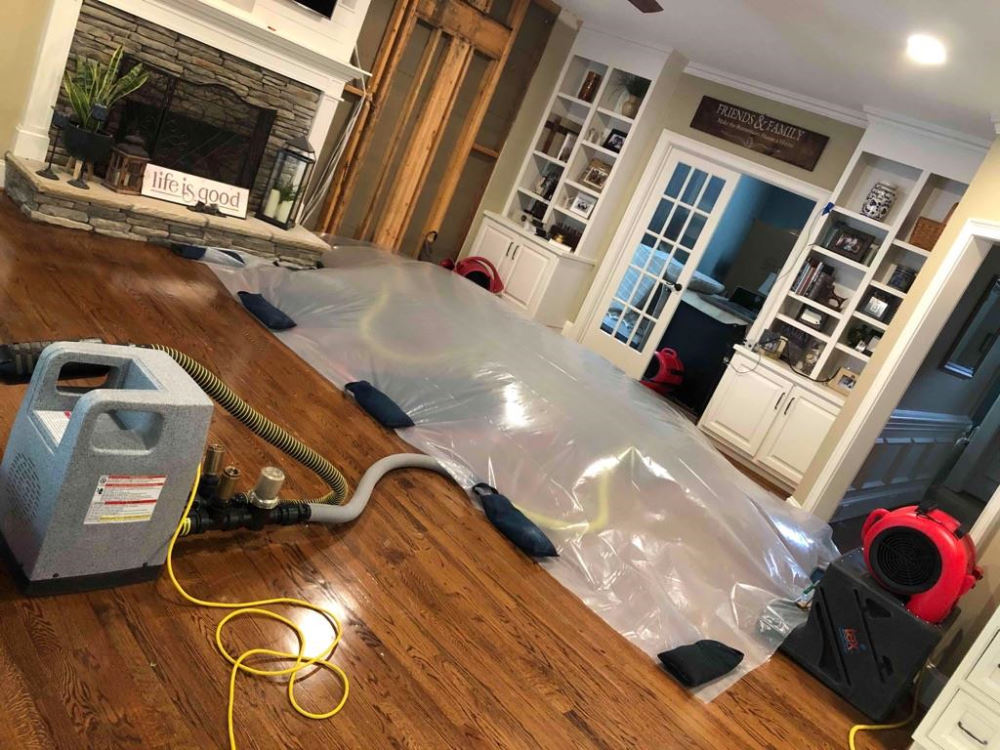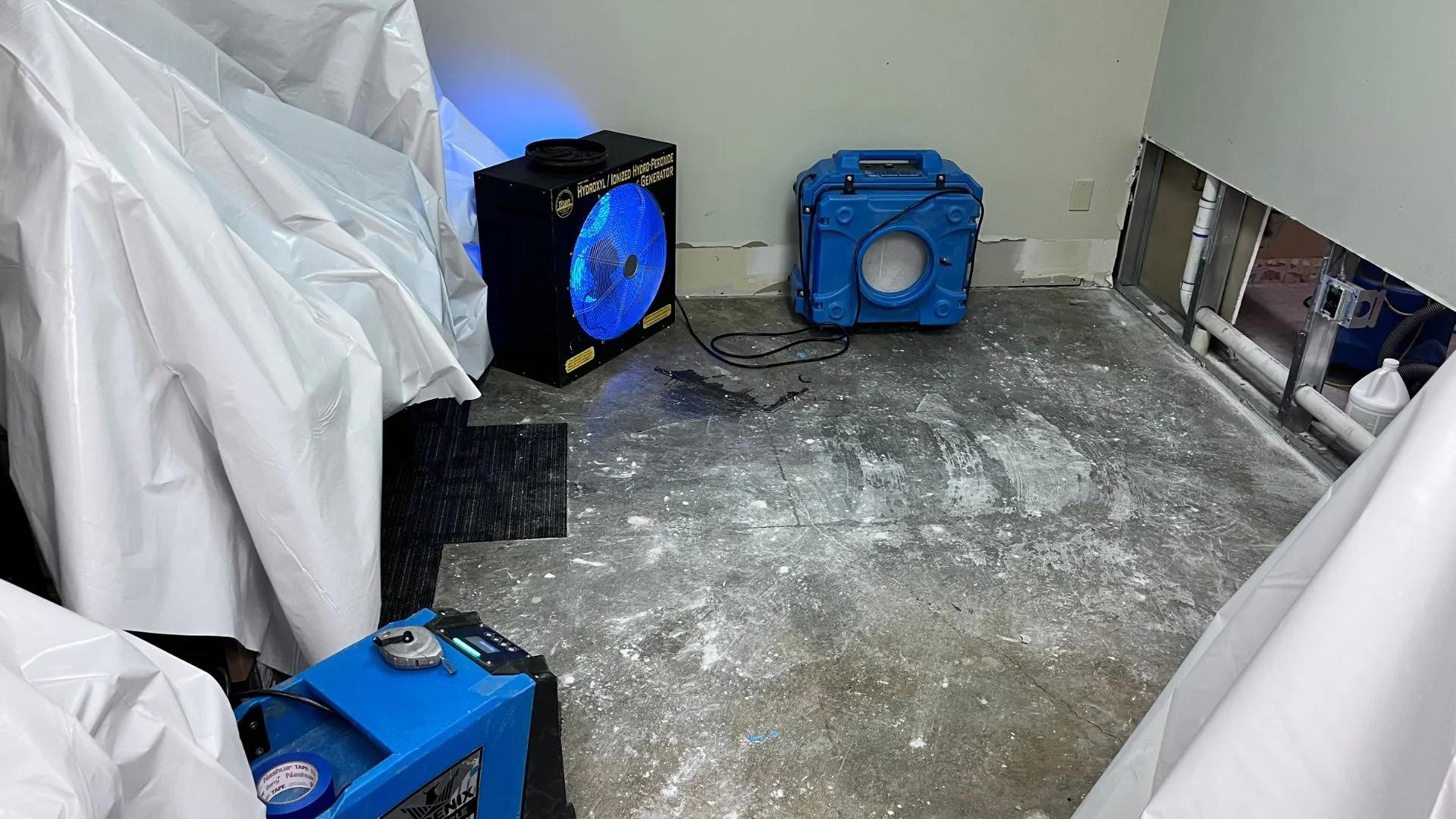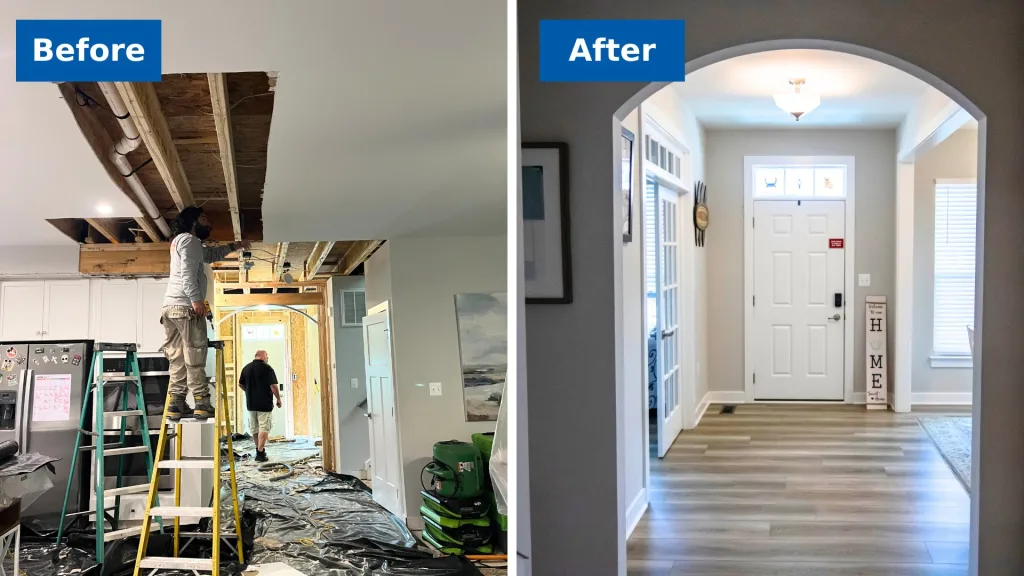DIY vs. Professional: When to Call Experts for Water Damage Cleanup
Vital Steps to Comply With for Efficient Water Damage Repair in your house
When confronted with water damage in your home, knowing the vital steps for effective restoration can make all the difference. You need to evaluate the damage and assurance security before tackling the issue. Stopping the source of water is important, however it's just the beginning. There's a collection of activities you need to take to safeguard your property from more concerns as soon as you have actually taken care of that. Allow's discover what you ought to do next.
Analyze the Damage
When you discover water damages in your home, the primary step is to analyze the damage thoroughly. Start by determining the resource of the water intrusion. Look for leaks, ruptured pipelines, or various other issues creating the problem. Next, take a look at the impacted areas for noticeable indications of damages, consisting of warping, discoloration, or mold growth. Do not forget to search in concealed spots like behind walls or under floor covering, as water can leak into these areas unnoticed.Document the damages by taking clear photos and notes. When talking about the situation with your insurance coverage provider or remediation professionals, this will certainly help you. Take note of the sort of products influenced, as various products call for different reconstruction strategies. Finally, evaluate the level of the damage. Is it minor or considerable? Understanding the range will certainly direct you in making a decision whether to handle it on your own or contact the professionals for a more extensive remediation process.

Make sure Safety and security
Before you begin any type of remediation job, ensuring your security is vital. Analyze the condition of your home. If the water's deep or if you notice electric hazards, don't enter the area. Shut off the electricity and gas supply to stop mishaps. Wear protective equipment like masks, handwear covers, and boots to protect on your own from pollutants or mold.It's crucial to remain mindful of your surroundings; expect unsafe surfaces and sharp objects. Treat it as dangerous waste if the water is from a sewer back-up. Maintain pet dogs and children far from affected locations to prevent exposure.Once you've taken these precautions, you can wage the restoration procedure. Bear in mind, your safety comes first, and if you're ever before not sure, it's finest to consult an expert. Taking these actions will help ensure you prepare to tackle the reconstruction safely and effectively.
Quit the Source of Water
After guaranteeing your safety, the next step is to quit the resource of water. Identify where the leakage is originating from. It might be a burst pipe, a defective appliance, or even hefty rainwater entering with a damaged roof covering. If it's a pipes concern, switch off the main supply of water to your home to stop additional flooding. For home appliances, unplug them and turn off their supply of water valves.If the source is outside, like rain, attempt to divert it away from your home making use of sandbags or various other barriers. For small leakages, you might be able to utilize tape or a sealer briefly up until a professional can fix it. Remember, addressing the resource swiftly is necessary to lessening damage and stopping mold growth. When you've quit the water, you'll remain in a much better setting to carry on to the next action in the repair procedure.

Remove Excess Water
Act promptly to get rid of excess water, as standing water can lead to extra substantial damages and mold growth. Collect your tools: a wet/dry vacuum cleaner, containers, and towels. If the water is shallow, you can make use of towels to take in the dampness. For much deeper water, a wet/dry vacuum is your best choice. Make sure to clear the vacuum cleaner regularly to avoid overflow.If the water is polluted, like from a sewage backup, wear safety gear, including gloves and masks, to maintain on your own secure. As soon as you have actually removed as much water as possible, look for concealed pockets of dampness in corners and under furniture, as these can harbor mold.Don' t neglect to shut off electrical devices and power outlets in damp locations to stop dangers. This first action is crucial in decreasing damage and establishing the phase for a successful repair procedure.
Dry and Dehumidify the Area
As soon as you have actually eliminated the excess water, it's necessary to completely dry and dehumidify the area completely. Begin by making use of dehumidifiers effectively to pull moisture out of the air and prevent mold and mildew growth. Keep an eye on humidity degrees to ensure the room dries totally.
Eliminate Standing Water
To efficiently tackle water damages, you require to concentrate on eliminating standing water as promptly as possible. Begin by gathering required devices, like a wet/dry vacuum cleaner or a pump, depending upon the quantity of water. A vacuum cleaner should do the trick if the water is superficial. For larger quantities, a pump is a lot more reliable. While working, ensure to wear protective equipment to keep on your own safe from contaminants. As you eliminate the water, focus on concealed areas like under furniture or in corners where water could accumulate. Your room will start to dry out as soon as you have actually gotten rid of the bulk. This step is crucial, as sticking around water can cause mold and mildew development and much more extensive damage.
Usage Dehumidifiers Effectively
Exactly how can you efficiently utilize dehumidifiers to dry and dehumidify your space? Beginning by putting your dehumidifier in the most damaged location, preferably where water damages is most extreme. Make sure to close all doors and windows to develop a covered environment. Transform on the dehumidifier and established it to the suitable humidity level, generally around 30-50%. Vacant the water collection storage tank often, or think about using a version with a constant drainage alternative for ease. Preferably, utilize followers to improve air flow, helping the dehumidifier work a lot more effectively. Keep the dehumidifier running until you're certain that the location is completely dried, protecting against mold and mildew growth and extra damage (Water Damage Repair). This step is necessary for efficient water damage repair
Screen Humidity Degrees
Surveillance humidity levels is vital throughout the drying procedure, as it helps assure your space remains without excess wetness. Buy a dependable hygrometer to track moisture properly. Preferably, you want to keep levels between 30% and 50%. If moisture readings increase over this array, you might need to adjust your followers or dehumidifiers to improve airflow. Check the readings frequently, specifically in locations susceptible to dampness, like basements or bathrooms. If you observe relentless high humidity, think about increasing ventilation or making use of additional dehumidifiers. Remaining on top of these levels not only quickens the drying out procedure but also prevents mold development, ensuring your home remains comfy and risk-free.
Tidy and Disinfect Affected Surfaces

Recover and Repair Your Home
After cleansing and sanitizing the affected areas, it's time to bring back and repair your home. Begin by assessing the damages. Check for architectural concerns, like weakened wall surfaces or floors, and address any needed fixings. Replacing harmed drywall or flooring is essential for both appearances and safety.If your furniture or belongings were affected, take into consideration whether they can be restored or require substitute. Clean or professionally bring back things here where possible.Next, touch and repaint wall surfaces up any kind of locations that need interest. This not only improves appearance yet additionally safeguards surfaces from future water damage.Don' t fail to remember to examine your plumbing and appliances for leaks, making certain every little thing's working effectively. Lastly, consider setting up a dehumidifier to stop future wetness concerns. By taking these steps, you'll recover your home to its previous splendor and produce a much safer living environment.
Regularly Asked Inquiries
How Long Does Water Damages Restoration Normally Take?
Water damages restoration generally takes anywhere from a few days to several weeks, depending on the level of the damage (Water Damage Repair). You'll wish to analyze the circumstance swiftly to lessen additional issues and ensure proper restoration
Will My Insurance Policy Cover Water Damages Repair Expenses?
Your insurance coverage might cover water damages reconstruction prices, however it relies on your plan. Examine your insurance coverage information and contact your insurance agent to clarify what's consisted of and what you need to submit a case.
Can I Manage Water Damages Restoration Myself?
You can manage water damages reconstruction on your own, yet it's vital to evaluate the scenario first. You could desire to call experts if it's considerable. Constantly prioritize safety and security and assure you've got the right tools.
What Are the Indications of Hidden Water Damages?
You may discover indicators of concealed water damage like warped walls, moldy odors, or discoloration. If your floorings feel mushy or you spot mold, it's time to check out better before the situation worsens.
How Can I Prevent Future Water Damages in My Home?
To protect against future water damage in your house, you ought to consistently check plumbing, seal fractures, preserve gutters, and warranty appropriate drainage. Mounting a sump pump and moisture obstacles can additionally aid maintain your space completely dry. When you find water damage in your home, the first step is to evaluate the damage completely. Act swiftly to remove excess water, as standing water can lead to much more extensive damages and mold and mildew growth. To effectively tackle water damages, you need to focus on eliminating standing water as rapidly as feasible. As you remove the water, pay attention to concealed areas like under furnishings or in corners where water might accumulate. Water damages remediation typically takes anywhere from a few days to numerous weeks, depending on the level of the damages.